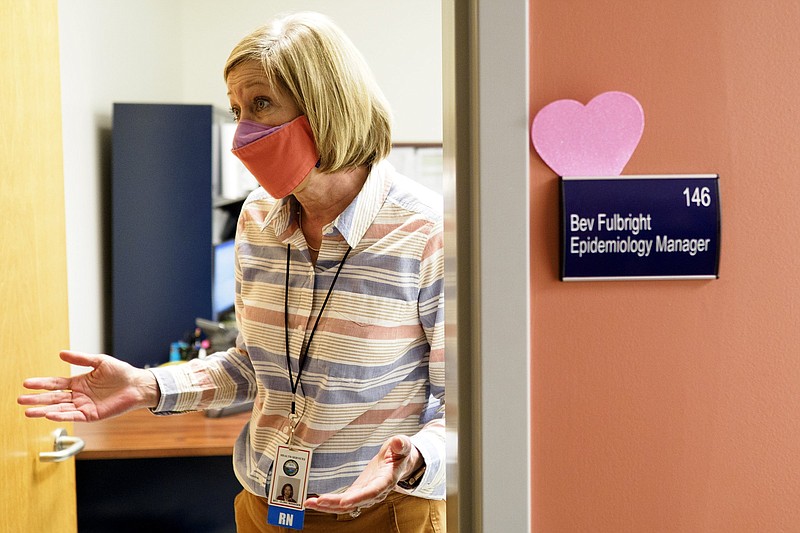New COVID-19 cases across Tennessee, Georgia and Alabama continue to decline - signaling that the record-breaking summer wave is coming to an end.
But public health officials said the Chattanooga region could face similar surges again as new coronavirus variants emerge in the future if more people don't get vaccinated.
Over the past two weeks, new cases in Tennessee have fallen by 41%, according to a state-by-state data analysis from The New York Times. Alabama and Georgia are seeing similar case declines, with new cases declining 47% and 33%, respectively.
That places all three states in the top 12 in terms of progress in reducing cases over the past two weeks.
Tennessee is now averaging 25 new daily COVID-19 cases per 100,000 residents over the past week compared to 160 new daily cases per 100,000 in the second week of September, according to that same Times analysis.
The summer surge pushed Tennessee to No. 1 in the nation in COVID-19 cases per capita since the start of the pandemic, but the state has since been surpassed by North Dakota, which is currently among the top five worst states in the nation in terms of new coronavirus cases.
Montana is home to the highest per capita cases in the nation, averaging 97 new daily COVID-19 cases per 100,000 residents over the past week. Other leading states at this time include Idaho, Wyoming and Alaska.
Registered nurse Bev Fulbright, epidemiology manager at the Hamilton County Health Department, warned residents not to get overconfident when looking at the latest case trends because around half of Hamilton County residents are still unvaccinated. Hamilton County, which has a higher vaccination rate than the rest of the region, is still experiencing high levels of transmission, she said.
"Our positivity rate this week is at 14%, and it ideally should be around 5% or lower," Fulbright said. "And we've been here before in this pandemic, so we need to continue to control what we can control, and that's our behavior - whether it's getting a vaccine, wearing a mask, social distancing, handwashing."
Health department leaders said their biggest concern at this point is the area's continued low vaccination rate and vaccine hesitancy.
Dr. Fernando Urrego, interim Hamilton County health officer, said the region's low vaccination level leaves Chattanooga especially vulnerable if there's another mutation like the delta variant.
"We'll be right back to where we were a couple of months ago," Urrego said. "Don't become complacent, because our concern is people are just not going to get vaccinated at this point, and even those that need booster shots are not coming to get their booster shots."
The summer surge - which was fueled by the highly contagious delta variant - was different from previous surges in several key ways, Fulbright said. Unlike the months leading up to previous peaks, cases and hospitalizations in the delta surge saw a rapid spike followed by a rapid decline.
"We had no plateau," Fulbright said, adding that the most recent wave caused hospitals to be "truly overwhelmed." More people were in the hospital this round, and many more needed intensive care when compared to previous surges. Hamilton County hospitals' winter peak for ICU patients was 65 on Jan. 8, while this round saw 99 patients on Sept. 13.
Other key factors were cases, hospitalizations and deaths affecting younger age groups and how easily the delta variant spread to others, leading to increased spread among households.
"If one person in the family got it, you could just almost be assured that everyone in the house would get it. It was very transmissible," she said.
There were fewer deaths in the summer surge compared to the winter, which Fulbright attributes to high vaccination coverage in nursing homes, where many outbreaks and deaths occurred earlier in the pandemic.
Heading into the fall and winter months, officials fear that the pandemic could worsen as more people head indoors and gather for the holidays.
Health department officials are anticipating influenza to come roaring back this year as people get together without masks.
"The opportunity is out in the community to potentially have more than one viral infection," Interim Health Department Administrator Sabrina Novak said. "And that's something we definitely want to try to curtail."
Contact Elizabeth Fite at efite@timesfreepress.com or follow her on Twitter @ecfite.
